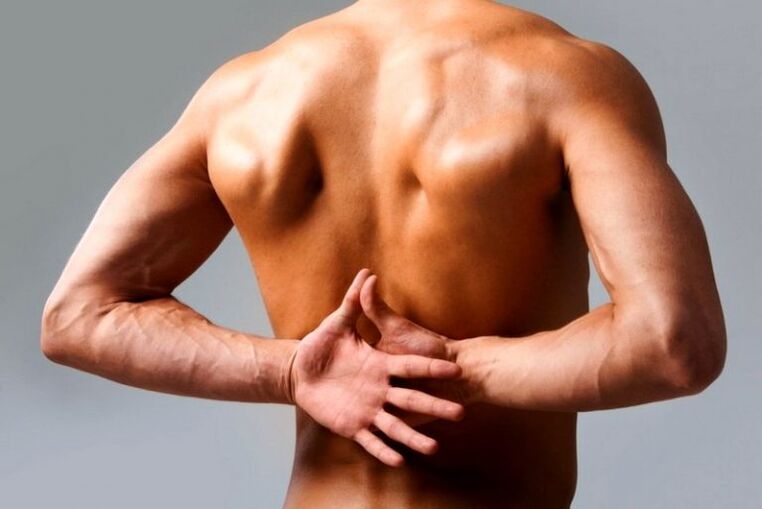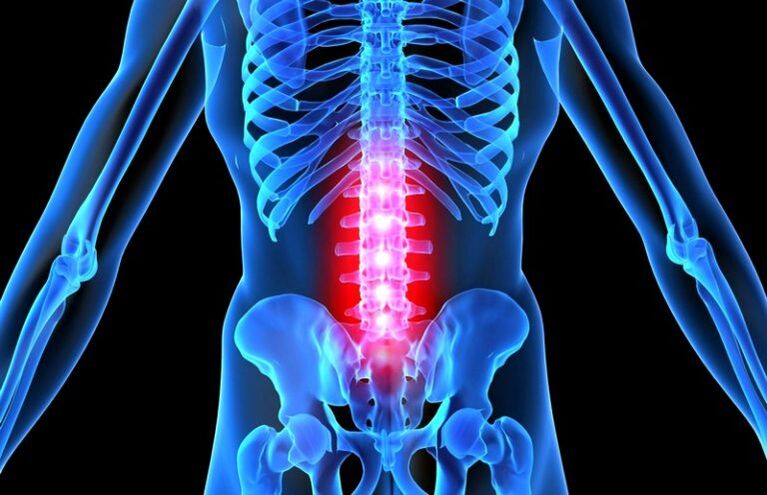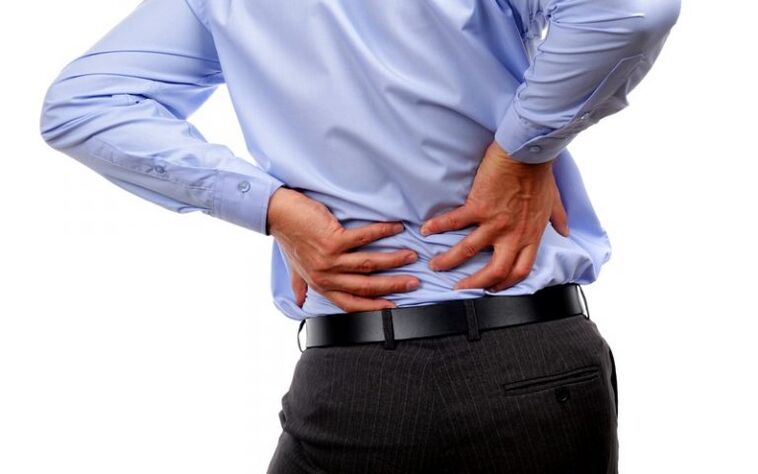
Osteochondrosis is translated from ancient Greek, meaning ὀστέον-bone and χόνδρος-cartilage, which is characterized by complex degenerative changes in bone and joint elements. Almost every part of the skeletal framework is susceptible to this neurological disease. The thoracic spine and/or cervical disc may be in the affected area. However, the symptoms and treatment of lumbar osteochondrosis are the most common under modern conditions. This is the reason for the discussion and attention of practicing neuropathologists.
Pathogenesis or development of the inflammatory process
Any organism in the process of growth will change its physiological functions. Therefore, due to this, the vascular bed of the intervertebral disc of the bone has undergone diffuse changes. The nutritional supply of the lumbar spine is complicated by various traumatic conditions and/or constant dynamic loads in this part of the spine frame. The osteochondrosis process causes cartilage joints to lose their elasticity and strength properties, thereby complicating nutritional deficiencies and essential trace elements. For lumbar osteochondrosis, the symptoms of the disease are the most active, asymmetry and unreasonable work of the spinal muscles are detected under various conditions:
- Insufficient warm-up of muscle tissue;
- Wrong posture
- Congestion of intervertebral joints due to excessive adipose tissue;
- Use a mattress on a soft base when resting at night;
- The lumbar spine is subjected to severe mechanical and/or dynamic loads;
- Physical stress
- As chronic diseases worsen.

The nutritional supply of the lumbar spine is complicated by various traumatic conditions and/or constant dynamic loads in this part of the spine frame.
If lumbar osteochondrosis is found, the symptoms of neurological disease caused by untimely medical intervention may lead to more serious neurological diseases, such as sciatica, intervertebral disc herniation, intervertebral disc injury and other complications.
Why does lumbar osteochondrosis occur?
So far, the problem of dispersion transformation in the intervertebral space has not been fully studied. Lumbar osteochondrosis, middle-aged people aged 35 to 45 often have neuropathological symptoms.

Nerve overload and stress can also lead to the onset of diseases.
It is at this most effective age that static and dynamic pressure will appear on the spine. However, according to the observation of experts, back pain is beginning to plague more and more young people. So between the ages of 18 and 25, young people have become neurological patients. This is due to poor physical activity, excessive weight, poor posture and general joint deformation, leading to lumbar osteochondrosis.
It is hoped that the symptoms and treatment of neuropathology will be recognized and adequately dealt with at the earliest stage of disease formation.
Other causes of lumbar osteochondrosis include:
- Genetic form
- Insufficient supply of micronutrients in cartilage and blood vessels;
- Violation of metabolic processes due to various circumstances;
- Uneven development of musculoskeletal structure;
- A sedentary lifestyle;
- Physical diseases related to the work of the endocrine system;
- The muscle structure is weakened due to the harmful effects of alcohol, smoking and other bad habits;
- The consequences of various chronic conditions;
- Segmental instability of spine elements;
- Nerve overload, stress conditions and other components.
However, when diagnosing lumbosacral osteochondrosis, female neuropathological symptoms can be diagnosed due to the development of disorders or diseases related to hormonal changes. At the age of 35 to 45 years, the female body begins to undergo significant physiological changes, which will affect the functional work of all bone and cartilage areas of the spine.
Symptoms and signs of the disease
With lumbosacral osteochondrosis, neuropathological symptoms make one feel sore in the waist, leading to numbness, discomfort and soreness in the lower back. The lack of proper and adequate treatment can complicate the situation and lead to complete atrophy of the lumbosacral muscular structure. A variety of factors can cause increased pain, such as sneezing, coughing, sharp turns, and lifting heavy objects. Incisions in the waist area most often occur in the hip area and the calf area of the lower limbs. For lumbosacral osteochondrosis, the symptoms of neurological disease can be determined by the following signs:
- Causes acute pain in organs in the sacral area and pelvic area;
- Loss of sensitivity
- Discomfort of the muscles innervated by the lumbar spine;
- Low blood pressure and malnutrition.

All these symptoms are caused by damage to the nerve roots of the lumbar intervertebral disc.
Stage of disease
When diagnosing lumbosacral osteochondrosis, the symptoms and treatment of the disease depend on the stage of the inflammatory process. Therefore, based on the results of the diagnostic examination, several specific signs of lumbar inflammation can be determined:
- The first stage is determined by the slight pain in the waist area, which will be aggravated under the influence of physical exertion. Only sudden movements can the patient feel severe, sore or dull pain in the lower back. In a relaxed state, no pain will occur.
- When the distance between the intervertebral discs is reduced due to compression, and the formation of degenerative dystrophy in the annulus fibrosus, the second stage is determined. The severe cutting pain that radiates to the ankle, buttocks, and outer thighs of the lower limbs is caused by the compression of the nerve endings between the intervertebral discs in the intervertebral space.
- The destruction of the annulus fibrosus occurs in the third stage of the disease, which is the most favorable period of disc hernia formation. Due to the severe deformity of the lumbosacral region, severe pain in the lumbar area is permanent.
- The last and fourth stage of lumbar osteochondrosis, its symptoms, treatment and rehabilitation are the most difficult in the process of destruction of the entire musculoskeletal system. This stage of the disease causes the patient's disability, and his complete or partial immobility.
However, any form of osteochondrosis should not cause fear and panic; only proper medical treatment is required.
Lumbar osteochondrosis: symptoms and medical treatment
Specialist physicians establish an appropriate diagnosis based on the symptoms and signs, according to the stage and form of the disease, and select appropriate medications. This is based on the combination of medications of various orientations. The key treatment goals to solve the problem are:
- Slow down the process of lumbar degenerative malnutrition by implementing appropriate treatment and preventive measures;
- Eliminate dysfunction of spinal nerve endings;
- Neutralize painful feelings;
- Functional recovery of lumbosacral muscle tone;
- The patient resumes an active life.
The age and sex of the patient, as well as the state of the endocrine system, play an important role in the choice of drug treatment.
The main emphasis in drug exposure is placed on the elimination of pain with the appropriate selection of pharmacological analgesic agents. Anti-inflammatory drugs allow you to neutralize destructive processes in the muscle structure of the spine area. The most effective agents are non-steroidal anti-inflammatory groups.

The most effective agents are non-steroidal anti-inflammatory groups.
Since NSAIDs (non-steroidal anti-inflammatory drugs) are ineffective, anesthetics supplemented with hormones and/or paravertebral blockers are used. In addition, the complex drug process also includes other types of pharmacological drugs, such as sedatives, muscle relaxants, and drug groups containing vitamin B1 and B12, which can eliminate oppression and provide micronutrients for nerve tissue. After the acute inflammation period is over, the treatment is completed by drug therapy, and other treatments and preventive measures are used in the remission period.
Treatment and prevention of lumbar osteochondrosis
You should know that the treatment of osteochondrosis is a complicated process that requires strict discipline and strict compliance with all prescriptions of the attending physician. The prerequisite for a complete physical recovery is complex treatment at all stages, including:
- Massage can help relieve muscle pain, restore blood circulation in the problem areas of the lumbar spine, and eliminate muscle tension in these parts of the body.
- Physical therapy is a good way to recover from illness. No side effects, elimination of residual stress in the lumbar region, these are the advantages of physiotherapy procedures.
- Manual therapy can mechanically act on the muscle tissues of the lower back in a metered manner and provide them with improvements in all important processes.

It should be remembered that if you do not follow the neuropathologist’s recommendations for the complex treatment of lumbar osteochondrosis, you may meet with a surgeon. In 90% of cases, the surgical intervention of the spine is caused by neglect of the disease state and non-compliance with the advice of the attending doctor.

























